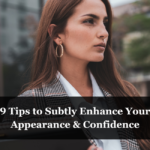If you wish to maintain a wholesome diet, including vegetables in your meals is unquestionably wise. Steaming is frequently regarded as one of the healthiest culinary methods because it preserves vital nutrients. However, what is the calorie count of steamed assorted vegetables? This article will delve into nutrition and disclose the exact number of calories in one cup of steamed mixed vegetables.
Nutritional Benefits Of Mixed Vegetables
Mixed vegetables provide a bounty of essential nutrients that support a wholesome lifestyle. Because vegetables are full of important vitamins, minerals, and fiber, they are very important for general health. Antioxidants, like vitamins C, A and phytochemicals, fight oxidative stress and strengthen the immune system. In addition, the fiber content promotes optimal digestion and a healthy microbiome in the intestines.
Potassium is an essential nutrient that helps control blood pressure. Folate helps cells grow and divide. Vitamin K promotes bone health and the healing of wounds. Carrots and bell peppers contain carotenoids that promote healthy eyesight and epidermis. Cruciferous veggies like cauliflower and broccoli have sulforaphane, which may help fight cancer and reduce inflammation.
Due to their low calorie and high water content, mixed vegetables aid in weight management by providing satiety and decreasing the likelihood of gorging. Their nutritional variety makes them an adaptable option for a variety of diets.
Nutrition Facts
Vegetables, mixed, frozen, cooked, boiled, drained, without salt, 1 cup
- Protein (g) 2.6
- Total lipid (fat) (g) 0.14
- Carbohydrate, by difference (g) 11.91
- Energy (kcal) 59.15
- Sugars, total (g ) 2.88
- Fiber, total dietary (g 4
- Calcium, Ca (mg) 22.75
- Iron, Fe (mg) 0.75
- Magnesium, Mg (mg) 20.02
- Phosphorus, P (mg) 46.41
- Potassium, K (mg) 153.79
- Sodium, Na (mg) 31.85
- Zinc, Zn (mg) 0.45
- Vitamin A, IU (IU) 3892.07
- Retinol (mcg) 0
- Carotene, beta (mcg) 1894.62
- Carotene, alpha (mcg) 880.88
- Vitamin E (alpha-tocopherol) (mg) 0.4
- Lutein + zeaxanthin (mcg) 579.67
- Vitamin C, total ascorbic acid (mg) 2.91
- Vitamin B-6 (mg) 0.07
- Folate, total (mcg) 17.29
- Vitamin K (phylloquinone) (mcg) 14.56
- Cholesterol (mg) 0
- Fatty acids, total saturated (g) 0.03
- Fatty acids, total monounsaturated (g) 0.01
- Fatty acids, total polyunsaturated (g) 0.07
Understanding The Steaming Method Of Cooking
Steaming is a cooking method that employs steam to cook food gently. Unlike other methods that involve direct contact with water, steaming helps vegetables retain their nutrient content, natural flavors, and vibrant colors. This method minimizes the loss of water-soluble vitamins, making it an excellent option for health-conscious consumers.
Calorie Content Of Various Kinds Of Vegetables
Examining the calorie content of common steamed vegetables:
Cauliflower
Broccoli is a well-liked food because it is high in fiber and vitamin C. About 55 calories can be found in one cup of steamed broccoli.
Carrots
Carrots, known for their beta-carotene content, contain approximately 45 calories per cup when steamed. These vibrant orange vegetables are both delicious and healthy.
Caulant
Due to its adaptability, cauliflower contains approximately 25 calories per cup when steamed. It is an outstanding low-calorie option for dieters.
Beans
A cup of green beans that have been cooked has about 31 calories. These beans are full of vitamins A and C and are also a healthy addition to your meal.
Peas
A cup of steamed peas, a fibrous vegetable, contains approximately 62 calories. They are a good source of protein from plants and dietary fiber.
List of Calories in Vegetables
- Vegetable Measurement Calories
- Lettuce 1 cup (36 g) 5 Calories
- Spinach 1 cup (30 g) 7 Calories
- Celery 1 cup (100 g) 14 Calories
- Cucumber 1 cup (100 g) 16 Calories
- Radishes 1 cup (116 g) 18 Calories
- Zucchini 1 cup (113 g) 19 Calories
- Mushroom 1 cup (96 g) 21 Calories
- Cabbage 1 cup (90 g) 22 Calories
- Cauliflower 1 cup (107 g) 27 Calories
- Asparagus 1 cup (134 g) 27 Calories
- Pumpkin 1 cup (116 g) 30 Calories
- Green Beans 1 cup (100 g) 30 Calories
- Broccoli 1 cup (91 g) 31 Calories
- Tomatoes 1 cup (180 g) 36 Calories
- Turnips 1 cup (130 g) 36 Calories
- Bell Peppers 1 cup (135 g) 38 Calories
- Brussels Sprouts 1 cup (88 g) 38 Calories
- Winter Squash 1 cup (116 g) 40 Calories
- Onion 1 cup (115 g) 46 Calories
- Carrots 1 cup (128 g) 53 Calories
- Artichoke 1artichoke (128 g) 60 Calories
- Potato 1 cup diced (150 g) 116 Calories
- Peas 1 cup (145 g) 118 Calories
- Sweet Potato 1 cup (150 g) 129 Calories
- Corn 1 cup (164 g) 177 Calories
Factors Affecting Calorie Count
Here are some factors which affect calorie count
- Serving Size: Portion size is a major factor. Larger portions inherently contain more calories, necessitating portion control for calorie control.
- Vegetable Density: Different vegetables have varying densities. Due to differences in water content and structure, a cup of one vegetable may weigh more or less than another, influencing calorie calculations.
- Cooking Time: Cooking Time is an important factor. Longer cooking times may result in nutrient loss and water evaporation, affecting calorie count.
- Preparation Methods: Before steaming, techniques such as cutting, dicing, or slicing can alter the surface area, potentially affecting the water content and, thus, calorie density.
- Ripeness: The ripeness of vegetables can influence their calorie content. Vegetables that are more ripe may contain more carbohydrates, thereby altering their caloric profile.
- Soil and Growing Conditions: Environmental factors, such as soil quality and climate, can influence the nutrient content of vegetables, thereby indirectly influencing their calorie counts.
- Variability Within Species: Variations in genetics, growing conditions, and harvesting times can contribute to differences in nutrient composition and calorie content, even within the same vegetable species.
Calculating Calories in Steamed Mixed Vegetables
To determine the calorie content of your steamed mixed vegetables, add the calories of the individual vegetables based on their serving sizes. Using online nutritional databases can provide precise nutritional values for different vegetables.
Thanks for visiting our site hope you like it..







